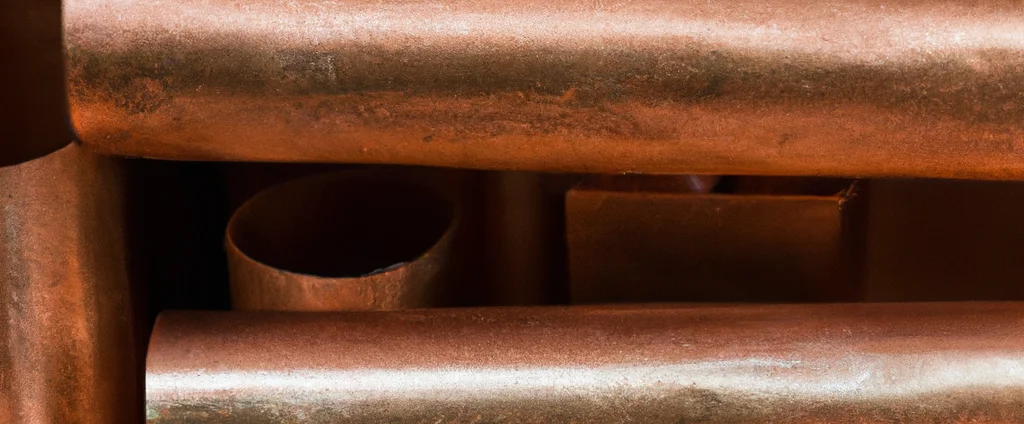Oxygen-Free Copper (UNS C10300)

Oxygen-free copper C10300 is a premium-grade copper alloy renowned for its exceptional electrical conductivity and thermal properties. It is ideal for critical electrical components, heat exchangers, and high-vacuum applications where purity and performance are paramount.
| Chemical Composition | ||
|---|---|---|
| Element | Min | Max |
| Copper | 99.95% | —— |
| Phosphorus | 0.001% | 0.005% |
The following table provides a list of copper C10300 properties in both SI and US customary/Imperial units.
Click on the button to switch between Metric and Imperial units.
| Physical Properties | Metric |
|---|---|
| Density | 8800 - 8940 kg/m3 |
| Mechanical Properties | Metric |
| Tensile Strength (Ultimate) | 230 - 410 MPa |
| Tensile Strength (Yield) | 80 - 400 MPa |
| Shear Strength | 160 - 240 MPa |
| Young’s Modulus (E) | 115 GPa |
| Shear Modulus (G) | 44 GPa |
| Elongation at Break | 50% |
| Poisson’s Ratio (ν) | 0.31 |
| Thermal Properties | Metric |
| Melting Point | 1080 °C |
| Thermal Conductivity | 390 W/m·K |
| Specific Heat Capacity (Cp) | 385 J/kg·K |
| Coefficient of Thermal Expansion (αL) | 1.7×10-5 1/°C |
| Electrical Properties | Metric |
| Electrical Conductivity | 5.7×107 S/m |
| Electrical Resistivity | 1.7×10-8 Ω·m |
The values in this table are approximate and can vary depending on various factors such as the specific manufacturing process and heat treatment applied to the alloy.
Advantages & Disadvantages of Copper C10300
| Advantages | Disadvantages |
|---|---|
| Electrical conductivity | High cost |
| Thermal conductivit | Soft |
| Corrosion resistance | Limited availability |
| Ductility and formability | Joining techniques |
Applications of Copper C10300
Oxygen-Free Copper C10300 finds application in various industries and sectors due to its excellent electrical conductivity, thermal conductivity, corrosion resistance, and ductility. Key applications include:
- Electrical and Electronic Equipment: Widely used in electrical and electronic equipment that requires high conductivity and minimal electrical losses. Applications include cables, bus bars, connectors, switches, terminals, and printed circuit boards (PCBs).
- Power Generation and Transmission: Employed in power generation and transmission systems due to its high electrical conductivity, including power cables, transformers, generators, and power distribution equipment.
- Heat Exchangers: The good thermal conductivity makes it suitable for heat exchangers used in HVAC systems, refrigeration units, and industrial processes, efficiently transferring heat between fluids or gases.
- Plumbing Systems: Its corrosion resistance and excellent formability make it a preferred material for plumbing systems, including pipes, fittings, valves, and connectors.
- Marine Applications: Used in marine applications such as shipbuilding, offshore structures, and marine equipment, where exposure to seawater and saltwater environments is common, thanks to its corrosion resistance.
- Medical and Scientific Instruments: The high purity and electrical conductivity make it suitable for medical and scientific instruments like MRI machines, particle accelerators, electrodes, and other equipment requiring accurate measurements and low electrical resistance.
- Electrical Contacts: Used in electrical contacts such as switches, relays, and connectors, where reliable electrical conductivity and durability are essential.
- Aerospace and Defense: Found in various aerospace and defense applications including wiring, connectors, antennas, radar systems, and electronic components, due to its high electrical conductivity and corrosion resistance.
- Automotive Industry: Utilized in automotive wiring, connectors, electrical components, and heat exchangers due to its excellent electrical and thermal conductivity, along with resistance to corrosion.
- Renewable Energy: Employed in renewable energy systems, such as solar panels and wind turbines, for electrical conductors, bus bars, and connectors.
